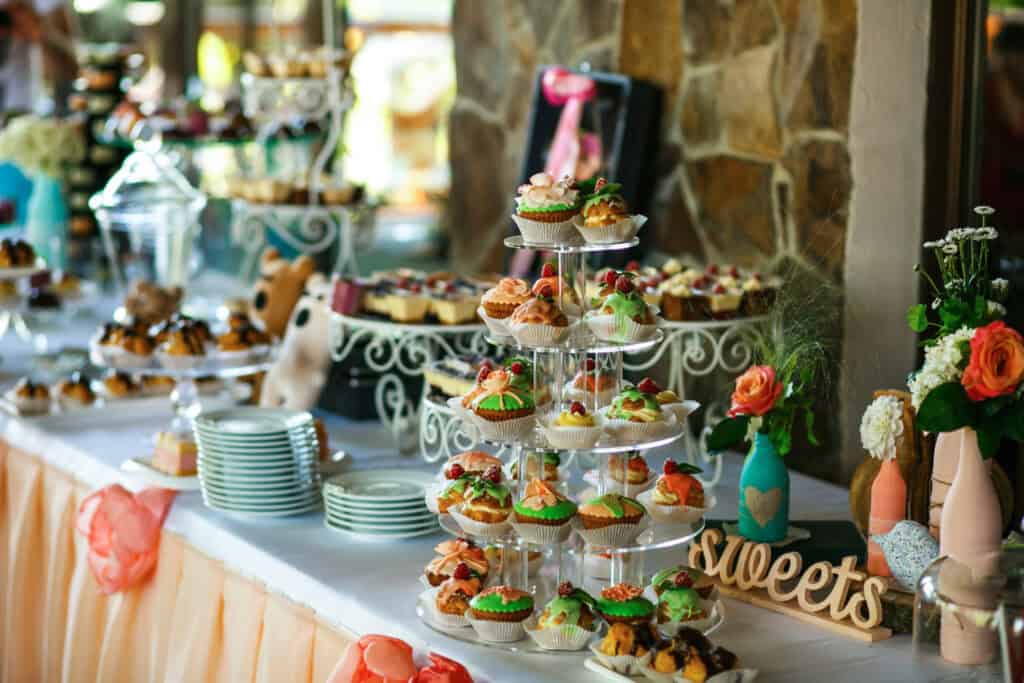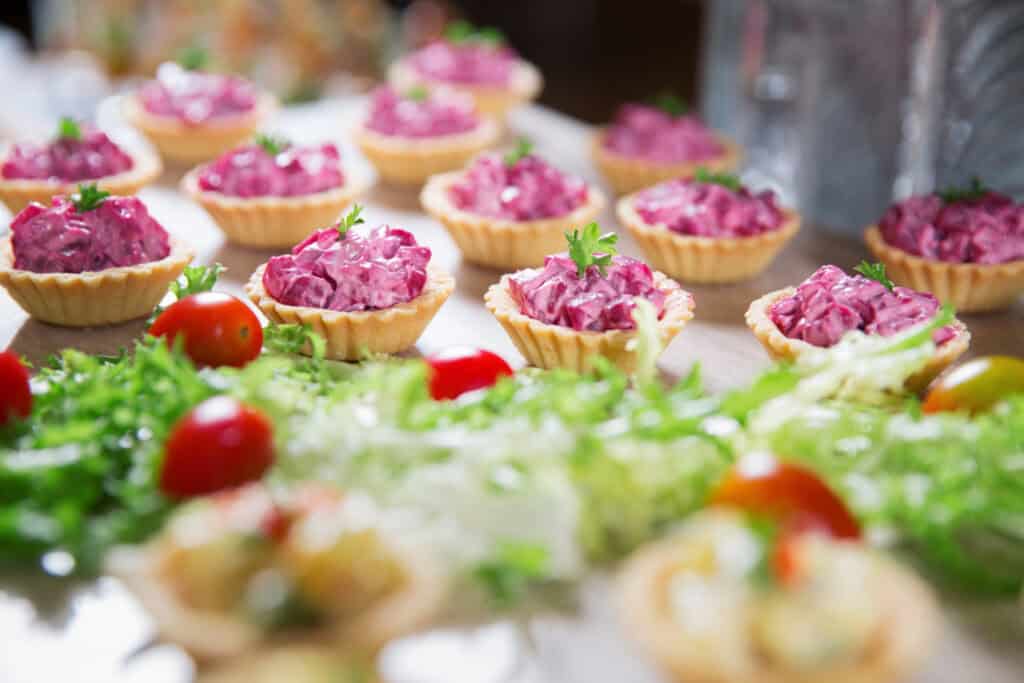
By Jermaine Thomas June 24, 2025
Food presentation is not just about plating. It is a visual language that tells a story, evokes emotions, and connects the diner with the dish. One of the most powerful and sustainable sources of seasonal inspiration for food styling comes from nature itself. Each season brings its own mood, color, and texture, offering endless possibilities to chefs and stylists.
A dish can be totally changed by knowing how to use the hues and tones of spring, summer, autumn and winter. In addition to improving food styling trends, it enhances a meal’s sensory experience. There is more to seasonal aesthetic appeal than a trend. It is a creative and considerate method to infuse culinary presentations with natural balance, storytelling, and freshness.
Why Nature is a Timeless Muse
Nature’s palette shifts throughout the year. Spring brings pastels and bright greens. Summer bursts with vibrant fruits and flowers. Autumn arrives with earthy tones, and winter carries muted whites, greys, and deep greens. These changing hues naturally influence the emotions and expectations of diners. The freshness of seasonal food presentation mirrors the time of year, making dishes feel more relevant and connected to the moment.
Spring: Lightness and Renewal on the Plate
Spring symbolizes new beginnings. This season calls for fresh greens, edible flowers, and clean, delicate presentations. Think of dishes that reflect the spirit of a blooming garden. Colors like mint green, lavender, soft yellow, and blush pink dominate spring plating. Light garnishes such as microgreens, asparagus tips, or young herbs work well. Using ceramic plates in pastel tones or natural wood boards enhances the sense of earthiness and freshness. Floral elements also take center stage, both in terms of garnish and arrangement.
Styling with Edible Blossoms
Before using any flower, ensure it is safe and approved for consumption. Edible blossoms like pansies, nasturtiums, and borage offer gentle pops of color. They can elevate a salad, decorate desserts, or even be frozen into ice cubes for drinks.

Summer: Energy, Color, and Bold Presentations
The colours on our plates intensify with the strength of the sun. The best time to enjoy produce is in the summer. Imagine melons, peaches, heirloom tomatoes, and juicy berries. This season invites layering, boldness, and expressive plating.
Summertime dishes tend to be more colourful. Fresh greens, sunny yellows, deep purples, and bright reds predominate. Summer-themed arrangements benefit from the contrast and vitality that raw ingredients, fresh herbs, and zesty citrus bring. Banana leaves and stone slabs are examples of natural plating elements that are often used.
Elevating Refreshing Dishes
The warmth of summer invites the use of cold or room-temperature dishes that are rich in color. For instance, a cold beet soup garnished with crème fraîche and herbs not only tastes refreshing but also pops visually. Citrus segments, mint leaves, and colorful oils help amplify both flavor and visual appeal.
Autumn: Earthy Tones and Textural Warmth
Autumn is a season that evokes richness and reflection. It is the time for warm spices, golden light, and comforting meals. In food styling, this translates into layered textures, warm color schemes, and rustic elements.
The key hues for autumn include burnt orange, amber, chocolate brown, olive green, and rust red. These tones can be brought to life with ingredients like roasted squash, root vegetables, caramelized onions, and stewed fruits. Wooden boards, linen napkins, and ceramic pottery fit the theme perfectly.
Using Textures to Evoke Warmth
Textures become essential in autumn presentations. Roasted and baked items often bring a pleasing contrast to soft components like purées or sauces. Adding seeds, nuts, or herb crusts not only boosts flavor but enhances the tactile experience of the dish. This style of food styling trends is not about perfection but comfort and honesty.
Winter: Simplicity, Contrast, and Minimalism
Winter demands a different strategy. The mood here becomes more subdued and reflective. The season’s stillness is reflected in the dishes. Contrast and simple arrangements are more important in visuals. The scarcity of colourful produce forces stylists to be more creative. The colours are muted, emphasising silvers, whites, deep greens, and crimson here and there. Ingredients like dark chocolate, beets, cabbage, and mushrooms often take centre stage. Presentation also leans towards neatness and structure.
Subtle Elegance in the Cold Months
Winter-inspired plating may use stoneware or matte surfaces. Cold plates, geometric arrangements, and monochrome tones reflect winter’s chill. A sprig of rosemary, a dusting of powdered sugar, or the sheen of a rich reduction can bring drama without overwhelming the plate.
Harnessing Nature for Visual Coherence
Nature not only offers seasonal inspiration for color and texture but also helps create coherence across a menu or brand. Stylists who align their dishes with the seasons are often able to convey a clearer visual story. It connects the diner to the natural cycle of the year, creating a subconscious sense of harmony.
Incorporating natural plating elements such as stones, leaves, bark, or shells offers a deeper layer of meaning. For example, using smooth river stones under sushi or placing desserts on slate tiles emphasizes a natural grounding that artificial props cannot replicate.
Building Seasonal Menus with Visual Impact
In addition to styling individual dishes, chefs and restaurateurs are increasingly using seasonal visuals to design entire menus. This promotes sustainability and local sourcing while also enhancing storytelling. In contrast to a winter menu centred around dark wood and spices, a summer brunch menu featuring fresh sunflowers and vibrant colours speaks differently.
The Emotional Power of Seasonal Styling
Visuals influence emotion, memory, and appetite. A summer plate can energize. A winter dish can calm. This ability to stir emotions is part of what makes seasonal food presentation so powerful. The emotional resonance of seasonal styling goes beyond looks. It reminds us of time spent in nature, cultural traditions, or even childhood memories. By tapping into these elements, chefs can create more memorable dining experiences.
Enhancing Resident Satisfaction in Hospitality
Restaurants and hotels that use seasonal visuals report higher resident satisfaction and repeat visits. Guests feel seen, understood, and connected to the world outside. It becomes more than a meal. It becomes a memory.
Trends in Seasonal Food Styling

The growing importance of food styling has increased due to the growth of social media and content-driven dining. These days, visual storytelling is a component of brand identity. A restaurant can maintain a current, interesting, and relevant social presence by utilising seasonal cues.
Embracing the changing seasons enables brands to remain in tune with their surroundings, whether it be in casual cafés or fine dining. Sustainable and authentic food styling is becoming more and more popular. A greater emphasis is now being placed on seasonal and biodegradable elements rather than plastic props.
From Trend to Timeless Practice
What started as a stylistic choice has become a standard. Many culinary schools and media outlets now teach seasonal styling as a key aspect of presentation. It promotes creativity while staying grounded in nature’s rhythm.
Conclusion: A Living Canvas
Embracing seasonal changes enhances food presentation with natural elements, boosting creativity and deepening diner connections. For chefs, stylists, and hospitality brands, this approach adds lasting value; elevating food storytelling, improving guest engagement and retention, and creating richer, more memorable dining experiences rooted in the beauty of the natural world.